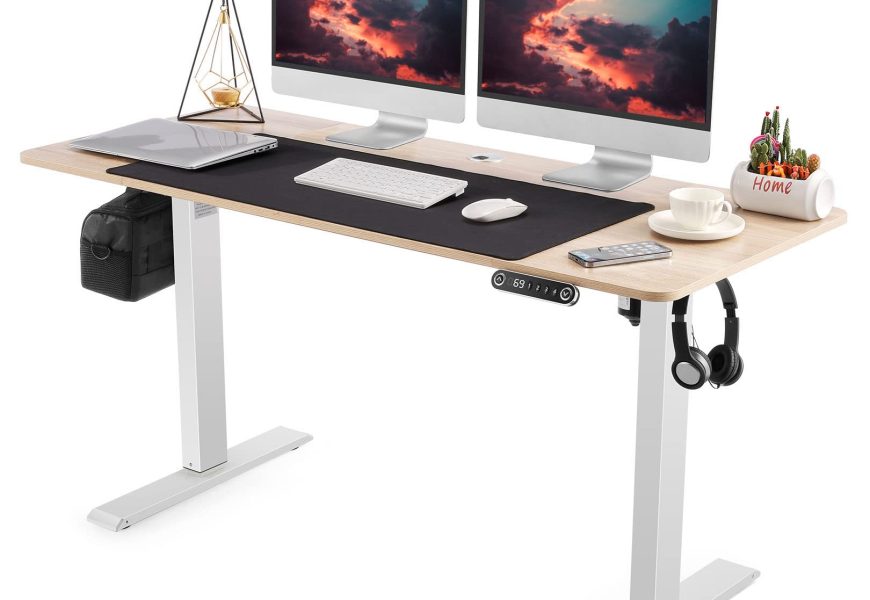Have you ever felt completely drained after hours of sitting at your desk?
You’re not alone.
Many people experience fatigue after long hours of using their computers. The problem often lies in the design of your device. Computers that lack ergonomic features can lead to discomfort and exhaustion.
Britannica perfectly defines fatigue as, “
fatigue is a state of extreme tiredness that can make it difficult to do normal activities.
But what if your PC could help you stay energised? That’s where ergonomic design comes in.
Ergonomics isn’t just a fancy term.
It’s about creating products that work with your body, not against it. Modern 24-inch All-in-One PCs embrace ergonomic features to help users stay comfortable and focused.
Let’s explore how these designs can transform your work and play experience.
What is Ergonomic Design, and Why Does it Matter?
Ergonomic design is all about user comfort. It considers how people interact with devices and creates solutions to reduce strain. Every detail matters, from the angle of your screen to the position of your keyboard. An ergonomic PC ensures that you can work or relax without unnecessary stress on your body.
- When you use a poorly ergonomically designed PC, you might experience neck pain, eye strain, or even wrist discomfort.
- Over time, these minor aches can turn into big problems.
- That’s why having a device built with ergonomics in mind is so important. A 24-inch All-in-One PC with thoughtful design can make a big difference.
Imagine using a computer like the IdeaPad Slim 5 Gen 8 AMD, compact yet powerful, and its design enhances user comfort. This is the kind of innovation that blends technology and ergonomics to improve your experience.
The Role of Screen Size and Adjustability
Screen size plays a big role in reducing fatigue. A 24-inch screen offers enough space to work on multiple tasks without feeling cramped. But it’s not just about size. Adjustability is key.
- Tilting the screen allows for a more ergonomic viewing angle.
- Keeping the screen at eye level promotes better posture.
Many devices, including models like the IdeaPad Slim 5 AMD laptop, prioritise adjustability. They’re designed to give you control over your workspace. This flexibility allows you to set up your PC in a way that’s perfect for you.
Reducing Eye Strain with Better Display Technology
Staring at a screen for hours can leave your eyes feeling tired and irritated. That’s where advanced display technology comes in. An ergonomic PC uses features like anti-glare screens and eye-care modes to protect your eyes.
- An anti-glare screen minimises reflections. This means you won’t have to squint to see what’s on your screen.
- Eye-care modes reduce blue light, which is a common cause of eye strain.
- These features ensure that your eyes stay comfortable, even during long sessions.
Let’s say you’re using an IdeaPad Slim 5 Gen 8 AMD for both work and entertainment. Its sharp display and eye-care features help you stay focused without discomfort. This is just one example of how ergonomic design can enhance your experience.
Posture-Friendly Design is a Game Changer
Good posture can make or break your comfort during long hours of computer use. Ergonomic PCs are designed to support your body’s natural alignment. This reduces the risk of developing aches and pains.
Devices like the IdeaPad Slim 5 AMD incorporate these elements to help you maintain good posture. The thoughtful design keeps you comfortable and focused, whether you’re working on a report or streaming your favourite show.
Compact Designs Boost Productivity
Cluttered workspaces can be distracting. That’s why the compact design of 24-inch All-in-One PCs is so appealing. These devices save space while offering powerful performance.
- A clean workspace isn’t just about aesthetics. It can actually improve your focus and productivity. With fewer distractions, you can complete tasks more efficiently. Ergonomic design goes beyond comfort. It’s about creating an environment that supports your goals.
For example,
the slim profile of the IdeaPad Slim 5 Gen 8 AMD makes it perfect for tight spaces. Its design helps you stay organised and productive without sacrificing comfort.
Ergonomic Peripherals for Enhanced Comfort
The peripherals you use with your PC also impact your comfort. Ergonomic keyboards and mice are designed to reduce strain on your hands and wrists. These tools work with your All-in-One PC to create a fully ergonomic setup.
- An ergonomic keyboard encourages a natural wrist position. This reduces the risk of developing repetitive strain injuries.
- An ergonomic mouse offers a comfortable grip and smooth navigation.
- These small changes can make a big difference in your overall experience.
Pairing these peripherals with a 24-inch All-in-One PC ensures that every part of your setup is optimised for comfort. This holistic approach to ergonomics helps you stay productive without feeling drained.
Ergonomic Design Supports Long-Term Health
Using a PC that’s not ergonomically designed can have long-term effects on your health. From chronic back pain to eye strain, the risks are real. That’s why investing in an ergonomic device is so important.
The IdeaPad Slim 5 Gen 8 AMD is a great example of a device that prioritises user health. Its ergonomic design ensures that you can work, play, and create without sacrificing your well-being.
Conclusion
Imagine a workspace that feels as good as it looks. With an ergonomic 24-inch All-in-One PC, this is possible. These devices combine comfort, functionality, and style to create the ultimate user experience.
Ergonomic design isn’t just a luxury—it’s a necessity for anyone who spends hours at a computer. The benefits, from reducing fatigue to improving focus, are undeniable. With options like the IdeaPad Slim 5 AMD, finding a device that meets your needs is easier than ever.
Why settle for discomfort when you can have a PC that works with you? Switch to an ergonomic 24-inch All-in-One PC and discover the difference it can make. Your body will thank you, and so will your productivity.









